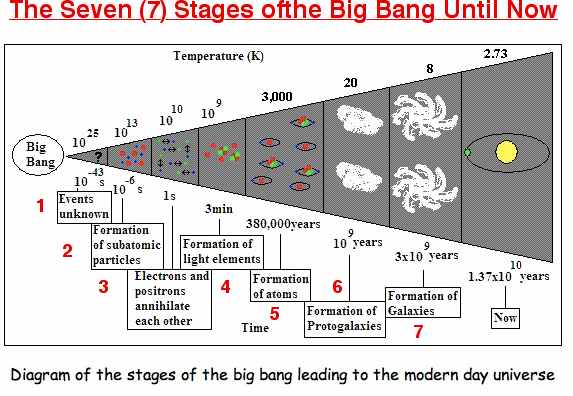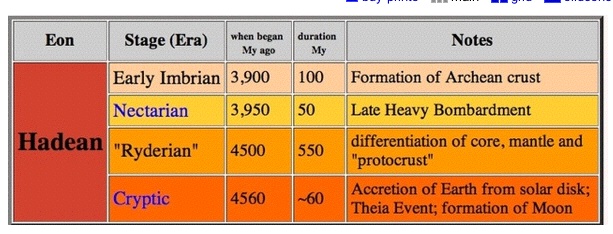I thought the Bible said we were created from dirt - which is just powdered rocks, after all. ;-)
Genesis 2:7 Then the Lord God formed man of dust from the ground, and breathed into his nostrils the breath of life; and man became a living being.
************************************************************
http://www.evolutionary-metaphysics.net/evolution_of_humankind.html
The birth of the universe
At the beginning of time, the universe was born when space opened up and was filled with an enormous explosion of energy. As the energy from this explosion radiated out into space, it cooled down and began to condense into matter.
Within a fraction of a second, most of the initial energy had condensed into fundamental particles of matter. After hundreds of thousands of years, as the universe continued to expand and cool down, these particles began to condense into atoms.
Billions of years ago, the conditions on the surface of the earth were very favorable for the formation of organic molecules. These molecules were washed into the sea to form pools of organic matter on the sea floor. Over millions of years, they continued to bond together to form increasingly long and complex molecular chains.
The first spark of life
Life began when one of these complex organic molecules began reacting with the other molecules around it in an unusual way. It was able to attract all of the pieces that it needed to assemble an identical copy of itself. The copy then split away from the original and began to assemble its own new copy.
After millions of years and countless mutations, new and more complex molecules developed a protective layer. The chemicals needed for replication could still pass through this protective layer, but the molecule was now safe from harmful reactions. The protective layer slowly evolved into a cell wall, and safely contained within the cell, the chemical reactions of life were able to evolve to become much more complex.
It took hundreds of millions of years, but eventually a new process evolved for producing a copy of a cell.
After billions of years of evolution, the rivers, lakes, and oceans of the world were swarming with a rich variety of single celled organisms. Some cells, such as algae, got their energy directly from sunlight, and some cells survived by eating other cells.
The most advanced single celled organisms had tiny arms that could swim through the water.
Early animals were very successful at swimming around, looking for food, and finding sexual partners. As populations grew, so did the number of mutations. As long as life was easy, food was abundant, and partners were easy to find, then there would be nothing to stop new variations from flourishing. This stage of evolution was like a ‘trying out’ period for new animal designs.
The temperature of seawater does not vary much, and so animals living in the sea are able to keep a relatively constant body temperature. Moving onto the land meant surviving a much wider range of temperatures, with cold nights and cold winters. The chemical reactions inside cells are sensitive to temperature. As the temperature drops, these reactions become slower.
Early mammals also adapted to living on the land by evolving higher body temperatures. This allowed them to move faster over longer distances and more actively search for food. They could hunt any time of the day or night, in any season, and could survive further north or south in colder climates. They evolved hairs on their skin to retain body warmth in cold weather.
Some tree dwellers became too large to walk across the tops of branches and began swinging beneath them instead. Their bodies became too heavy for their tails to act as a counterbalance, and so they lost their tails and developed a more upright posture to keep themselves balanced. Fewer branches could now support their weight. Instead of leaping between trees, they climbed down and walked between them.
The ancestors of humans
Around 7 million years ago, some of these ape-like creatures moved away from the forests and began living on the grass covered plains. As they spent less time in trees and more time traveling across open ground, evolutionary pressure favored those with longer legs, and they began walking upright.
Grazer said:
Though we are 50% genetically similar to a banana
Well then, that explains everything! :toofunny
Maybe they were Helium deprived?











